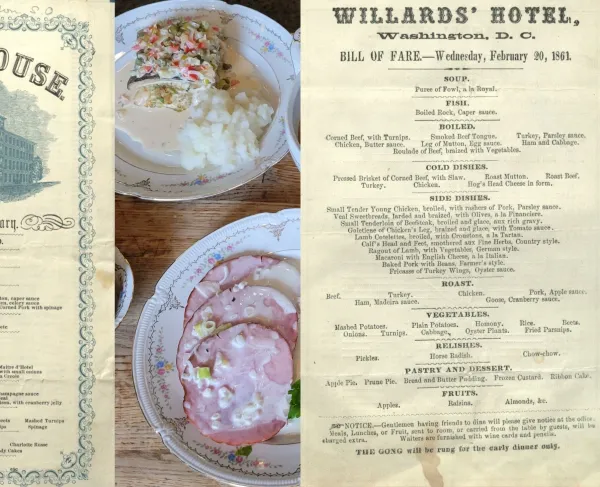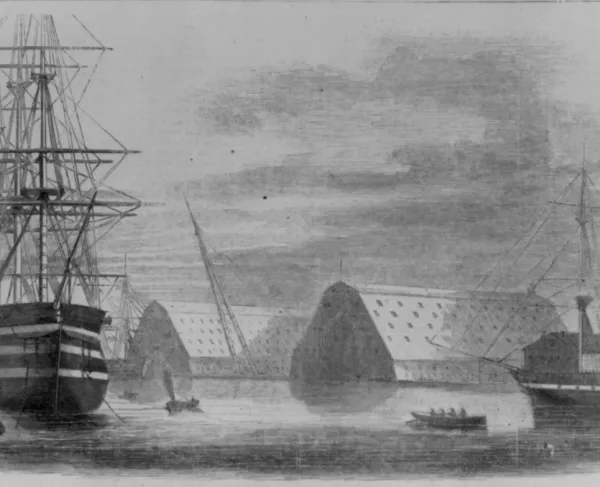Passing Down Our History
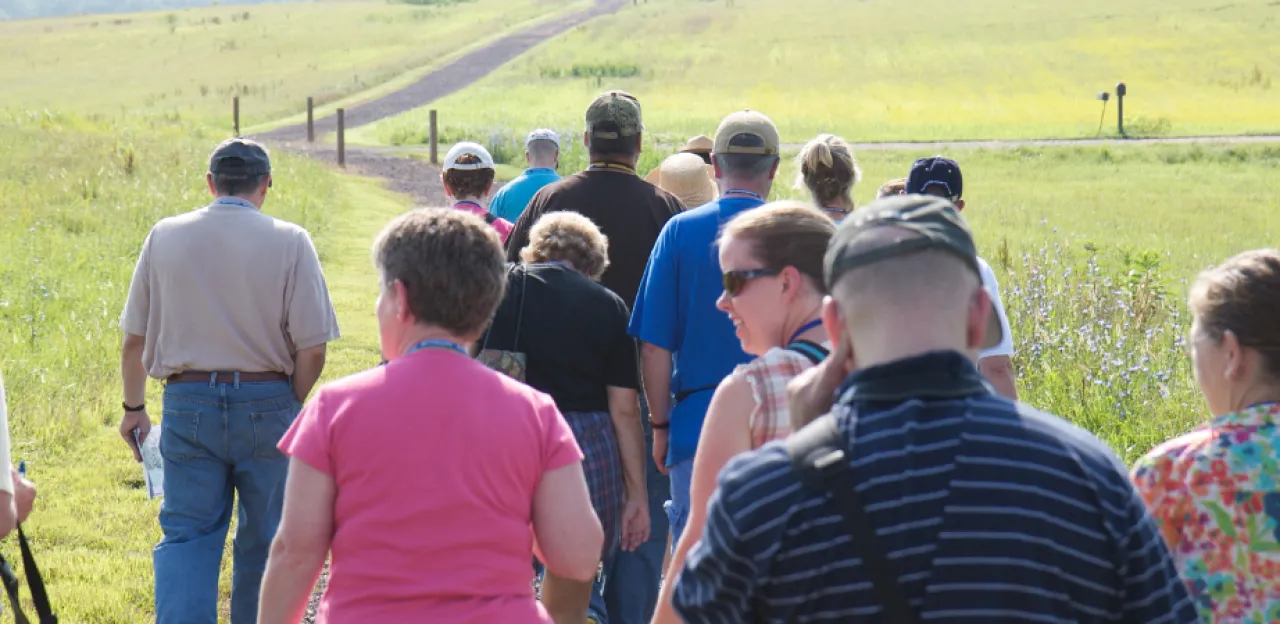
Together, we have walked the battlefields of Fredericksburg and Chancellorsville. In doing so, we have seen how important it is to save battlefield land for future generations. Hallowed Ground, without question, is a vital teaching tool when it comes to the teaching of history associated with The American Civil War.
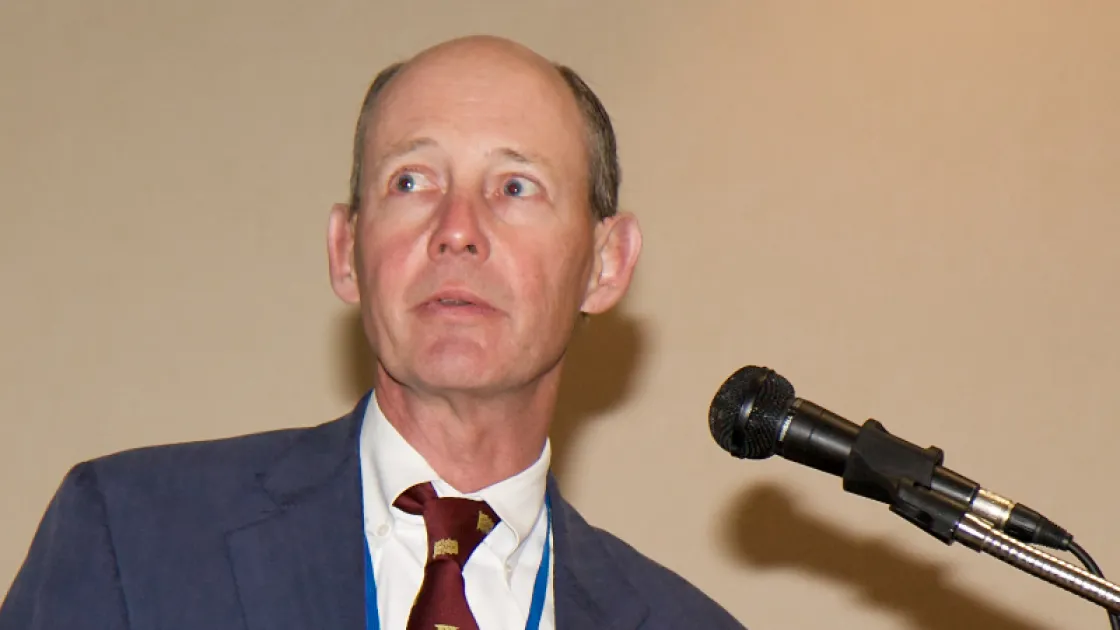
The Civil War Preservation Trust has preserved over 25 thousand acres of hollowed ground at a cost of over $120 million [see list of preserved land]. Half of that $120 million has come from private donations while the other half has come from federal, state and local sources. I am honored to be able to serve on the CWPT board of directors. I believe that this is my seventh year on the board and according to the corporate bylaws, a director can serve nine years or until such time, if turned upside down, nothing falls out of his pocket. For me, I am not sure which will come first.
First, I want to thank some very important folks who have made this Teacher Institute possible. Ron Cogswell, our chief operating officer who keeps our ship on course – thank you! For every successful chief operating officer there is a chief operating officer advisor and here I want to give a nod of thanks to Beth Cogswell who is sitting beside Ron and keeping a close eye on him.
Also indispensable to the success of this institute are Jennifer Rosenberry, Nicole Osier and Rob Shenk – the three awesome leaders who make our education department function so well. And, of course, our younger staff – the hard working core at the very heart of CWPT. You will agree with me that they have been everywhere and have done everything possible to keep all of us on time and at the right place. Let us say “thank you” to Mary Stephens, Liz Jacoby, Dave Weimer, Courtney Rose and Kandi Weir. Would all of you please stand and receive a well earned ovation!
This has been our eighth Teacher Institute and each year, with your input, we intend to make it better and better. How many here have been to two or more of these programs? Wow! Well, there you are – I would say that well over half of you are veterans and that tells us that we are providing you with a forum which creates value and enhances your teaching skills.
I am told we have assembled 140 teachers here from 32 states and the District of Columbia. I am going out on a limb to make a guess here – I would say that over the eight years we have held these institutes we have reached out to nearly 1,000 teachers who have reached out to tens of thousands of students – perhaps as many as 100,000 students in all!
I ask each of you to think a moment about that. How many students you have taught will take a major in history when they reach college? How many will go on to receive a masters degree in history? And how many of your students will one day earn their doctorate in history? I believe that there will be hundreds, perhaps thousands, who will set their life in motion toward the study of history because you have excited them and motivated them in that direction through your teaching skills.
Who knows but that one day some of your students may reach the heights of a Douglas Southall Freeman, a Bruce Catton, a Shelby Foote, or perhaps a Bud Robertson. It is not only possible. It is probable.
I have been involved in the historic preservation field a long time. What concerns me the most when visiting historic sites, like battlefields, is the average age of those who are actively taking an interest in the history associated with those historic sites. The sad truth is that the young are just not well represented.
Clearly, with exceptions, our nation’s children feel disconnected with our national history and consequently have little interest in our national historic sites.
Why is that? Is it because they consider history, like the 19th century history we have studied here this week, to have happened just too long ago?
When we were children, do you remember how long it seemed to take for our birthday celebration to come around from one year to the next? Are we not now shocked and dismayed at how quickly those annual celebrations seem to come now?
As we grow older, the relativity of time dynamics changes. As we grow older, the importance of history becomes clearer to us. Is it because that, after we reach a span of years, we see that see that 19th century history was just not that long ago?
I would like to make a point here by reading some reflections that were written by a Virginian who lived near Winchester, Virginia.
“Twenty to thirty years after Appomattox, the war was a central theme of our existence. Participants and their families were proud of their Virginia Volunteers. They loved to recount the journeys and marches, the horrors and the victories. In all of this, there seemed to be little hate or rancor. It was the valor and the actions that were paramount… not the final outcome.”
The writer then goes on to describe his boyhood home – a two room over two room structure – a typical Virginia house of the 19th century with one of the rooms a “great room” with a large fireplace. The writer then tells the reader that his family moved his father into that room when his father became terminally ill because it was the warmest room in the house.
“When my father became terminally ill, his bed was moved into this room where he was visited by friends, neighbors and relatives. This was the same room where I had spent most of my play time as a child. My father’s last visitor was Uncle John. He was our favorite visitor as when he came to visit things really picked up. I recall his visit clearly as it was my father’s last conversation.
“Uncle John said, ‘Weren’t we innocent greenhorns the day when you, Rollie and I enlisted at Laurelgrove?’.
“Father said, ‘Yes, I thought I was starting off on my most exciting adventure! We were so full of patriotism and we just knew that we’d save the South and be back in six months or so. Now that I am a parent, I often wonder how our mother felt with three of her sons enlisting at the same time.’
“Uncle John smiled and said, ‘I was passing that old oak where we enlisted on my way over here today and I was thinking about how little we knew about ourselves then. Who would have thought that three months after we enlisted that Rollie would be dying of pneumonia in Lynchburg?’
“At this point, my father’s mind jumped to the Gettysburg battlefield. ‘I sometimes wonder why you and I survived when so many others were lost. I thought I was a goner on that field at Gettysburg. Remember how we were so cocky and sure of success when we started that charge under Pickett? Then all hell broke loose, and in no time, there I was lying on that field, all shot up and with the dead and dying falling all over me.’
“Uncle John answered, ‘The strange thing is that I don’t remember the pain of being hit. What stands out in my mind is that hot sun bearing down for two days and the horrible stink of rotting bodies all around me. When those Union soldiers came to pick us up, I didn’t know whether to be relieved or terrorized at being a prisoner of war.’
“Father closed his eyes for a moment and then he said, ‘For you and me, the foot soldiers, the big picture consisted of living from day to day and obeying orders. Beyond that, there was little time to do any thing else. Crowded trains, foraging for a scrap of food to eat, the smell of gunpowder, the excitement of winning, and talking to the boys around the nightly camp fire – that is the picture of the war I carry.’
“Having said those words, my father closed his eyes forever.”
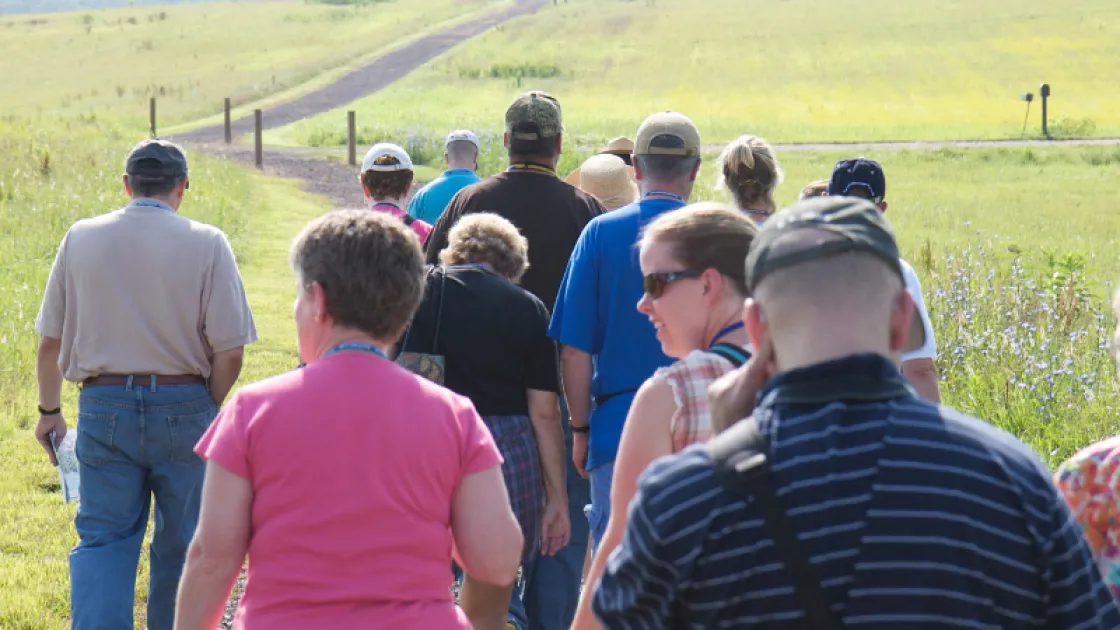
Later in these reflections, the writer tells us that he attended the 75th reunion at Gettysburg held in 1938.
“I feel so fortunate to have attended that last reunion of the Confederate and the Union forces. There were about 4,000 Yankees and about 2,000 Confederates. I talked with many of them from both sides and I attended the dedication of the Eternal Light Peace Memorial. The keynote speaker was President Franklin D. Roosevelt. I didn’t know it then, but that was my last chance to meet with those old soldiers who had been witness to that historic occasion. Historians consider the Battle of Gettysburg to be one of the 15 most important battles in history. It was a terrible battle that, in my opinion, neither side won, not even the Union forces. General Meade let go an opportunity to counterattack quickly. He might well have destroyed General Lee’s army once and for all. Instead Lee retreated successfully back into Virginia and the war continued for two more painful years, painful for both armies and millions of civilians too. I realize now that it was best that the Confederacy had not won. The defeat at Gettysburg was the beginning of the end of slavery. Out of the ashes of tragedy, a greater good sometimes arises. The ultimate result of the Battle of Gettysburg was that our country was reunited and that slavery was abolished.” *
The writer I have quoted was Hugh McCormick. I met Mr. McCormick in 1993 at Shenandoah University in Winchester, Virginia. He was 90 years old and his father and uncle had been Confederate soldiers in the 38th Virginia – a regiment in Armistead’s Brigade and Pickett’s Division in the Army of Northern Virginia. Both men were severely wounded in Pickett’s Charge - probably from an exploding shell coming in from the direction of Little Round Top. I sat at the table with him at dinner and listened to his stories of growing up in Virginia and the next day I sat with him in the van as we drove to Gettysburg to look at the ground his family will never forget. He spoke with great feeling of his memories of coming there over the years. He was unable to cross the field with us – that field which Armistead’s Brigade crossed on July 3rd, 1863. The van dropped us off and then took Mr. McCormick around to the other side near the clump of trees where Cushing’s Battery had been located and where a very few of the brave men of Armistead’s Brigade made it across that wall. Mr. McCormick was there at the wall waiting patiently for us to come across. He made a point of shaking the hands of each one of us as we stepped over the wall.
God, what a moment that was for me! I have never forgotten that day. On that field and on that day, I had the honor of shaking the hands of a man whose father and uncle had fallen in Pickett’s Charge.
The history of The Civil War was not far removed and disconnected from Hugh McCormick in 1993. It is without question that all of us with him that day saw the historic site of that battlefield as completely relevant to our modern day times and we clearly understood that it was imperative that it always be preserved in context.
That is my challenge to you today. We must not just teach our students history. We must not simply make our students read history. We must make our students feel history!
We must make them understand that what happened then is part of who we are today. We must give them a clear understanding of our past so they can embrace their future with the knowledge and respect of where we have been.
That is what CWPT's Teacher Institute is all about. It is just that simple.
On behalf of The Civil War Preservation Trust, we thank each one of you for making the tremendous effort to be here with us. We thank you for giving us your time and we thank you for providing us with an opportunity to communicate on how best to make our children feel history.
We look forward to seeing you next July in Hagerstown, Maryland for the 9th Annual Teacher Institute.
Class Dismissed!
Respectfully submitted,
Childs F. Burden
*Quotes taken from “Confederate Son” by Hugh D. McCormick. Published by The Civil War Institute, Shenandoah University, 1993.
